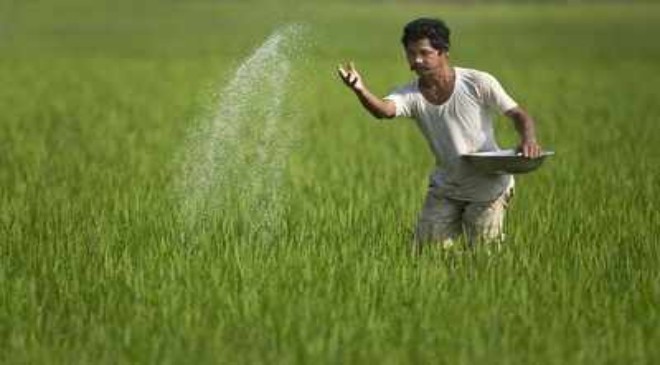
The Union government intends to launch a scheme — named PM PRANAM — to reduce the use of chemical fertilisers by incentivising states, The Indian Express has learnt.
The proposed scheme, short for PM Promotion of Alternate Nutrients for Agriculture Management Yojana, also aims to bring down the subsidy burden on chemical fertilisers, which is estimated to reach Rs 2.25 lakh crore in 2022-23 — 39 per cent higher than last year’s figure of Rs 1.62 lakh crore.
It assumes significance in view of the sharp increase in the overall fertiliser requirement in the country during the last five years.
It is learnt that top officials of the Union Ministry of Chemicals and Fertilizers, which has mooted the idea of PM-PRANAM, shared the details of the proposed scheme with state government officials during the National Conference on Agriculture for Rabi Campaign held on September 7. The ministry has also sought their suggestions on the features of the proposed scheme, it is learnt.
Sources said the ministry has initiated inter-ministerial discussions on the proposed scheme and that its draft will be finalised after incorporating the views of the departments concerned.
A source hinted that the scheme will have no separate budget and will be financed through the “savings of existing fertiliser subsidy” under schemes run by the Department of Fertilizers.
Also Read : Good news for taxpayers! Check how new Income Tax guidelines will benefit you
According to sources, 50 per cent of subsidy savings will be passed on as a grant to the state that saves the money.
Sources also said that 70 per cent of the grant provided under the scheme can be used for asset creation related to technological adoption of alternate fertilisers and alternate fertiliser production units at village, block and district levels. The remaining 30 per cent grant money can be used for rewarding and encouraging farmers, panchayats, farmer producer organisations and self-help groups that are involved in the reduction of fertiliser use and awareness generation.
Giving an example of the calculation in reducing chemical fertiliser use, a source said that a state’s increase or reduction in urea in a year will be compared to its average consumption of urea during the last three years. For this purpose, data available on a Fertilizer Ministry dashboard, iFMS (Integrated Fertilizers Management System), will be used, said the source.
Official records show that the actual expenditure on fertiliser subsidy was 1.27 lakh crore in 2020-21. In the Union Budget 2021-22, the government budgeted an amount of Rs 79,530 crore, which increased to Rs 1.40 lakh crore in the revised estimates (RE). However, the final figure of fertiliser subsidy touched Rs 1.62 lakh crore in 2021-22.
In the current financial year (2022-23) the government has allocated Rs 1.05 lakh crore. The Fertilizer Minister has said that the fertiliser subsidy figure could cross Rs 2.25 lakh crore during this year.
According to a written reply given to Lok Sabha by Bhagwanth Khuba, the Union Minister of State for Chemicals and Fertilizers, on August 5, the total requirement of four fertilisers — Urea, DAP (Di-ammonium Phosphate), MOP (Muriate of potash), NPKS (Nitrogen, Phosphorus and Potassium) — in the country increased by 21 per cent to 640.27 lakh metric tonnes (LMT) in 2021-22 from 528.86 lakh metric tonnes in 2017-18.
The maximum increase — 25.44 per cent — has been recorded in the requirement of DAP. It went up from 98.77 LMT in 2017-18 to 123.9 LMT in 2021-22. Urea, the most used chemical fertiliser in the country, recorded an increase of 19.64 per cent — from 298 LMT in 2017-18 to 356.53 in 2021-22 — in the last five years.
The move is in line with the government’s focus on promoting a balanced use of fertilisers or alternative fertilisers in the last few years.
To plug leakages in fertiliser subsidy, the Centre had introduced a direct benefit transfer system in fertilizers with effect from October 2016. Under this system, 100 per cent subsidy on various fertiliser grades is released to the fertiliser companies on the basis of actual sales made by the retailers to the beneficiaries. Besides, the government had incorporated new nutrients like Nano urea and “bio-stimulants” in the Fertilizer Control Order-1985 (FCO). In addition to this, initiatives like Soil Health Card and neem-coated urea have also been taken.
On December 21, Union Minister for Chemicals and Fertilizers Mansukh Mandaviya had informed Lok Sabha that the government “encourages the balanced use of fertilisers” in conjunction with biofertilisers and organic fertilisers.





































